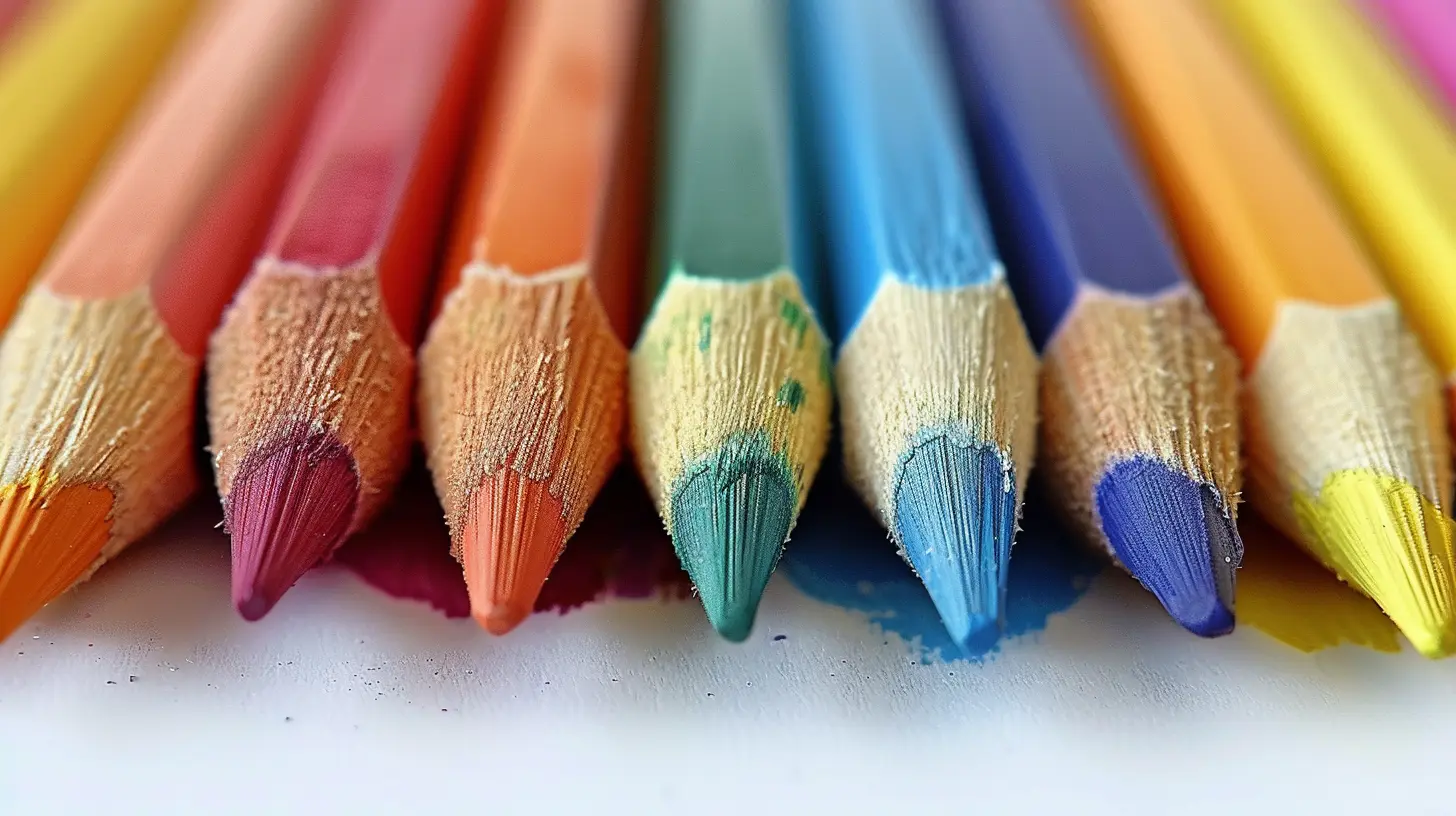Unlocking Your Child’s Creativity Through Art and Crafts
6 November 2025
Let’s be real—parenting is like riding a rollercoaster blindfolded while juggling sippy cups. But amidst the chaos, there’s one magical way to calm the storm, spark joy, and nurture your child’s inner genius: art and crafts. Yep, those paint-splattered afternoons and glue-stick disasters actually play a huge role in helping little minds flourish.
Creativity isn’t about becoming the next Picasso or building life-size paper mache unicorns (although that does sound pretty awesome). It’s about letting your child explore, imagine, and express themselves in their own unique way. So, if you’re ready to trade screen time for sparkle time and unlock that creative spark, grab your glitter and let's dive into why art and crafts are pure gold for your child’s development.
Why Creativity Matters More Than Ever
Okay, I know what you're thinking — “Sure, crafts are cute and messy, but do they really matter?” Short answer: oh heck yes.In a world obsessed with test scores, structured schedules, and digital screens, creativity is quietly becoming the secret sauce of success. It helps kids think outside the box, solve problems like pros, and express emotions without having a full-on meltdown in aisle three of the grocery store.
Boosts Emotional Intelligence
Ever seen a kid draw a fire-breathing dragon after a tough day at school? That’s them processing emotions. Art gives children a safe, pressure-free space to explore their feelings — sadness, excitement, frustration, joy — and pour them out into colors, shapes, and squiggly lines.Builds Confidence and Independence
When your child proudly shows you their lopsided popsicle stick house, they’re not just saying “Look what I made.” They’re saying, “I did this! I figured it out!” That sense of pride helps build self-confidence and encourages them to try new things.Encourages Problem-Solving and Critical Thinking
Ever had to fashion a bear costume out of an egg carton and some cotton balls? That’s problem-solving at its finest. Through crafts, children learn how to overcome obstacles (even if it’s just running out of glitter glue) and make decisions on their own.Supports Fine Motor Skills
Cutting, gluing, coloring, folding — all those tiny repetitive movements are actually strengthening those little hands for writing, typing, and tying shoelaces later on.
How to Spark Creativity Through Art and Crafts
Now that we know why art is amazing, let’s talk about how you can actually encourage that creativity at home — without turning your living room into a war zone of paint and pipe cleaners.1. Set the Stage — But Keep It Simple
You don’t need a Pinterest-perfect art studio to get started. A small bin filled with crayons, paper, tape, glue, scissors, stickers, and maybe a few googly eyes is more than enough. Keep it accessible where your child can grab supplies when inspiration strikes.Pro Tip: Old newspaper makes a great table protector. Bonus points if your kid gets inspired by the comics section.
2. Ditch the Rules (Well, Most of ‘Em)
It’s tempting to say, “No, sweetie, the sky isn’t green!” But guess what? Maybe in their world, it is. Let their imagination run wild. The more freedom they have, the more confident they’ll feel expressing themselves.Encourage “process over product.” In other words, don’t focus on what the final artwork looks like—focus on the fun your child had making it.
3. Create Together
Yes, you’re busy. No, you don’t have to be a professional artist. But just sitting down and creating beside your child (even if you’re just doodling flowers or making a mess of Play-Doh) shows them that art is valuable and fun.Plus, it’s a great way to bond. Who knew macaroni necklaces could lead to such deep convos?
4. Make It Part of the Routine
Creativity doesn’t always have to be a full-blown afternoon activity. Keep it simple and consistent. Maybe 20 minutes after school, or Sunday morning while pancakes are cooking—small, regular doses keep their creative muscles flexed.
Fun Art and Craft Ideas That Kids (and You) Will Love
Stuck for ideas? No worries—I’ve got your back. Here are some easy, low-prep, high-fun crafts to get those creative juices dripping like wet paint on the floor.1. Junk Drawer Sculptures
You know that drawer full of random stuff you don’t know what to do with? Give it to your child and let them build a robot, castle, spaceship—whatever! Add tape, glue, and imagination, and you've got a masterpiece in the making.2. DIY Storybooks
Fold a few pieces of paper, staple the edge, hand over pencils and crayons, and let your child become an author and illustrator all in one. Encourage them to tell a story about their day—or invent a completely new character.3. Nature Crafts
Grab some sticks, rocks, and leaves from the backyard or park and let your child create art using natural materials. Think nature mandalas, leaf rubbings, or even painted pebbles.4. Sensory Art
Get messy! Think finger painting, clay modeling, or shaving cream murals on a cookie sheet. Sensory play taps into more than just creativity—it helps with emotional regulation and early learning.5. Themed Craft Days
Have a “Color Day” where everything is in shades of blue, or “Under the Sea” day with fishy crafts and ocean tunes in the background. A little theme adds a whole lot of magic.
Encouraging Without Controlling: Finding That Sweet Spot
Here’s where things get tricky. You want to be supportive, but not bossy. Helpful, but not hovering. Encouraging, but not overpraising. Think of yourself as the creative sidekick—not the director.Ask Open-Ended Questions
Instead of “What is it?” try “Tell me about your picture!” Let them lead the conversation. You’ll be surprised at how much thought went into that pink blob with six legs.Praise the Process
Say things like, “I love how you mixed those colors,” or “It looks like you had so much fun making this!” That shifts the focus from being “good at art” to enjoying the journey.Display Their Work Proudly
Yes, even the weird ones. Create an “art wall,” put masterpieces on the fridge, or even frame a few. Your child will feel seen and valued, and that boosts their creative confidence tenfold.When Mess Happens — And It Will
Let’s keep it real: art is messy. Glue ends up in hair, glitter finds its way into your coffee, and you’ll probably need to repaint the table at some point. But here’s the deal—mess is just evidence of magic in the making.Prepare ahead with smocks, drop cloths, and washable everything. But also embrace the chaos. Creativity isn’t neat and tidy—it’s joyful, wild, and full of surprises.
Art for Every Age (Because Creativity Grows with Them)
Each age brings new creative quirks and abilities. Here’s a quick guide to keep you inspired:Toddlers (1–3 Years)
- Scribbling with chunky crayons- Finger painting
- Sticking shapes on paper
- Tearing paper (Yes, it counts!)
Preschoolers (4–5 Years)
- Cutting and gluing collages- Painting with brushes
- Making sock puppets
- Play-Doh sculptures
Early School Years (6–8 Years)
- DIY comics and storybooks- Bead jewelry
- Origami or paper crafts
- Nature art excursions
Tweens (9–12 Years)
- Mixed-media art projects- Photography
- Sewing or knitting basics
- Digital drawing apps
Keep evolving the activities with their growing interests and skills. The goal is to keep the spark alive well into the tween (and even teen) years.
Final Thoughts: Let’s Raise Imaginative, Confident Kids
Creativity isn't about being perfect—it's about being authentic. Every time your child picks up a paintbrush or smears glue on cardboard, they're learning that their ideas matter. They’re learning to take risks, think differently, and express themselves without fear.So, the next time your child asks if they can paint a dragon with purple polka dots—don’t say no. Grab your own brush. Who knows? You might just rediscover the creative magic inside you too.
Keep the markers handy, the praise heartfelt, and remember: in a world full of rules, creativity is the freedom every child deserves.
all images in this post were generated using AI tools
Category:
Education TipsAuthor:

Max Shaffer
Discussion
rate this article
1 comments
Flora Morales
This article piques my curiosity! How can simple art supplies spark such profound creativity in kids? I'm eager to explore the techniques that can help unleash my child's imagination and boost their confidence through hands-on art experiences.
November 7, 2025 at 4:14 PM

Max Shaffer
I'm glad to hear you're excited! Simple art supplies encourage exploration and self-expression, allowing kids to experiment without fear of failure. Techniques like open-ended projects and guided prompts can help nurture their creativity and build confidence. Happy creating!


